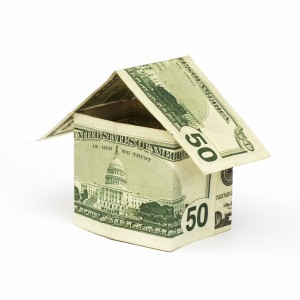by Paul Slaybaugh | Feb 21, 2012 | Home Buying
Have you been searching for a home for six months? A year? Longer?
If you have not found the home of your dreams (or, at least, the home of your needs) despite a protracted hunt, it’s time to come to grips with this stark reality: you are dreaming too big.
The home buying process is not a one-size-fits all proposition by any stretch, but there is a core truth that is applicable across the board. If you have been actively searching for a home for longer than 90 days and written nary an offer, you have set your sights too high, and it’s time to start paring back your wish list. While it’s true that you need to give the market a chance to bear that which you covet, it’s simply a pipe dream if a full quarter of a year has elapsed with no sign of your white whale breaching the active inventory.
When the market was in full free-fall, those with time on their hands had the luxury of waiting it out. Sooner or later, the 3000 square foot, 4 bedroom, custom home on an acre in North Scottsdale would dip into their price range. Alas, with the suddenly resurgent market sending prices the other way and the inventory shrinking, the opposite is potentially true. The longer you wait on a ship that is not coming in, the further out to sea the fleet gets.
So what’s a 2012 Scottsdale home buyer to do? Adapt to the market and adjust your criteria. Maybe 2800 square feet will suffice instead of the 3000 upon which you had your heart set. Could you live with 3 bedrooms and a den as opposed to 4 true bedrooms? How about half an acre instead of a full 43,560 sq ft?
Or bump up your price threshold until you break into the kind of inventory that fits the bill. In an ascending market (which, by all appearances, the Scottsdale Real Estate market has entered into after a steep and lengthy decline), time is decidedly not on your side.
Does this mean I advocate rushing out and purchasing the nearest approximation of what you want? Certainly not. The rash of purchases made out of blind fear that prices were running away from buyers forever made for a willing accomplice to the 2005-2006 bubble. It’s never a good idea to make any crucial decision from a position of fear. What I do advocate is approaching your house hunt with a little more urgency than has been necessary these past five years. In a competitive environment which has reintroduced agents and consumers to bidding wars and a limited volume of quality homes from which to choose, the laconic wait-and-see approach will hamper your ultimate chances for success.
We are early enough in our fledgling recovery that prices are still within shouting distance of their low points and 30 year interest rates continue to be reigned in on a short leash. It remains an excellent time to purchase a home for those in the market, it simply has become more difficult than saying “eenie, meanie, miney, mo” to the myriad available options that were once scattered about in abundance.
For years, we’ve counseled sellers to reassess their pricing after “x” days on the market without an offer. Now it’s the buyer’s turn.
If you have been frustrated by the current inventory, or have lost out on multiple properties due to heavy competition, you have likely set your sights too high. Make adjustments to your “must have” list or increase the amount you are willing to spend if you have been actively looking for a house longer than 3 months. You are pining for something you can’t have. In a market on the upswing, the longer you wait to take corrective action, the greater the discrepancy grows between your wish list and the world around you.
You’ve got to be hip to the new rules if you want to be a player in this market.

by Paul Slaybaugh | Sep 30, 2011 | Home Buying, Scottsdale Real Estate
One of the more confounding logistical quandaries that can arise in Real Estate is the classic chicken or the egg paradigm: Does one sell a house before knowing where he is moving, or does one buy a new house without having his current one sold?
No doubt, the dilemma of which cap to doff first has vexed many a consumer. Selecting the correct course of action is dependent, like most things, on a variety of factors. For the sake of clarity, we will keep things simple.
If you have a boatload of equity in your current home, have flexibility with the ultimate selling price and have the financial wherewithal (cash in hand or the ability to obtain a new loan that is not conditional upon the sale of your home) to purchase a new home prior to selling your existing one, then you are the rare individual in the enviable position to call your shot. To eliminate the prospects of a double move and the fear of obligating yourself to the sale of your home without clear knowledge of where you are heading, you will likely opt to buy first. Especially if you are not convinced that the home of your dreams is lurking in the market at present, it makes sense to locate the next property before committing yourself to the rest of the process.
As most buyers are reliant upon the proceeds from their current house to purchase a new home, however, the above scenario is a pipe dream for the less well-heeled. Most will face the stark reality that they are simply hamstrung on a purchase until they sell their existing house.
So how does one combat the fear of committing to destinations unknown when putting a home on the market?
The ideal method is to negotiate a purchase that is conditioned upon the ultimate sale of your home, but few and far between are the sellers who will entertain straight contingent offers of that ilk. The preponderance of bank owned properties and short sales in the present market makes the task even more arduous as contingent offers are simply not entertained by the banks. Only the most patient seller will take a flyer on an offer from someone who has to sell a property to make the deal work. And if you happen to find such a rare bird, you’ll likely have to overpay for the home due to the weakness of your position.
When purchasing first or conditionally is not an option, the best compromise is to make your offers after you have accepted a contract on the home you are selling, but before it has closed escrow. With a buyer in hand, it is considerably easier to approach another seller with an offer. More attractive than a straight contingency in which you still have to line up a willing buyer, you can structure your offer to be subject to the successful close of escrow of the contract currently in place. This is not only more appealing to the seller, but if you have negotiated a longer close of escrow on the home you are selling, you can build in a little time to locate a property and negotiate a contract, thus avoiding a dreaded double move. Timing the closings can be tricky, but if done correctly, you can move directly from one home to the other without having to put your gear in storage while you, the kids, your dog Sadie, and the goldfish check into the Holiday Inn for a few weeks.
Naturally, to make this scenario work perfectly, you have to do your homework in advance. Even prior to listing your home for sale, start looking online at the available inventory. Get in the car with your agent to look at homes that fit your parameters. Get preapproved with your lender so that you are ready to pounce at a moment’s notice, as the right home for you is often right for someone else, too. Wasting time getting your preapproval in place after you find the property opens the door to not only unrealistic window shopping, but losing an ideal candidate to a buyer who is one step ahead. Do your due diligence up front and you’ll be ready to enter the scrum as soon as your home attracts a buyer.
To be sure, coordinating the near simultaneous buying and selling of homes is a stressful undertaking. You will experience Exorcist moments in which your head spins around a full 360 degrees. Understanding the process and the steps you can take to increase your chances of success will limit the projectile vomiting, however.
So which comes first, the chicken or the egg?
It varies from coup to coup, but in the end, it’s all protein.
by Paul Slaybaugh | Feb 16, 2011 | Home Buying, Scottsdale Real Estate

Gonna Save Money By Renting, Eh?
I find myself working the Scottsdale rental market more often these days than in years past. With a large percentage of the populace having been converted from homeowner to renter after selling a home short or losing it to foreclosure (thus, effectively eliminating themselves from the buyer pool for the foreseeable future due to credit damage and/or home ownership malaise), and would-be sellers opting to lease their current homes out rather than taking a huge equity bath if circumstances force a move, it’s an arena in which Realtors are currently in high demand. So it was that I was researching rental home availability for a couple of clients this afternoon in the McCormick Ranch area.
While I’ve been aware of a diminished number of available rental properties coinciding with rising rents for some time now, I was shocked by the dearth of options I turned up in ordinarily easy to fit parameters.
For instance, there are exactly ZERO active unfurnished, single-family home listings in the 85258 zip code (McCormick Ranch, Scottsdale Ranch, Gainey Ranch, etc) for lease under $2000 a month at present. None, zilch, nada. This in a zip code that has fetched an average price per square foot of $164.89 for single family homes in the past six months (Aug 16, 2010 – Feb 16, 2011) .
Extrapolating the sales price of a 3 bedroom, 1800 square foot house based on that per foot average, current resale market value would be approximately $296,892 without adjusting for +/- factors.
Intrigued, I was drawn to crunch the affordability numbers on such a property.
Given that many buyers today are trying to get a foot in the door for the least amount of up front expense as possible, let’s pre-suppose a 3.5% down payment for a 30 year, fixed FHA loan. Assuming an interest rate in the 5.25% range, and tacking on the additional .5% for monthly PMI, the principal and interest payments on a loan balance of $286,501 at 5.75% is $1671.94. Add in property tax and insurance estimates of approximately $170 and $70 respectively for a total monthly PITI payment of $1911.94. Throw in the $15/month McCormick Ranch POA dues, and you are sitting on an approximate monthly outlay of $1926.94.
It should go without saying that figure decreases with a larger down payment.
A twenty percent down conventional borrower, for example, avoids the monthly mortgage insurance, thereby getting a significantly better annual percentage rate (credit and all other factors being equal) to coincide with the lower principal balance.
Now to rent this same property, back to the MLS we go.
If you were in the market to lease an unfurnished, single-family home in 85258 today, you would have exactly six choices: the cheapest of which is a 1900 square footer currently listed for $2195/month in McCormick Ranch. It bears repeating that the CHEAPEST available rental property in the category today costs almost $300 more per month (less potential maintenance costs of home ownership, but also ignoring potential tax benefits) than it would to purchase the same house with the lowest down payment available to most borrowers.
That is staggering.
Thinking the paltry number of available rentals might be an anomaly confined to a sought after zip code, I delved into the cheaper, neighboring zips of 85250 and 85251 in South Scottsdale. Going back just six months ago, a prospective tenant had his/her choice of remodeled 1950s-1960s ranch homes in the $800-1500 / month range. After all, these are zip codes in which a single-family, 3 bedroom, 1500 square foot home can be had in the 150-175k range these days.
The current rental inventory?
- There are 2 single-family homes for lease under $1500/month in 85250.
- There are 5 single-family homes for lease under $1500 / month in 85251.
_____________________________________________________________________________
Want to do you're own sleuthing?
Make your own comparisons by searching the current inventory.
Scottsdale Rental Homes | Scottsdale Homes for Sale
_____________________________________________________________________________
There is no moral of the story other than the context given to recent reports that tout home ownership in Scottsdale as having surpassed renting in affordability. I treat all such reports with healthy skepticism, as one must always question the source as well as the metrics used, but this is some news that actually jives with what I am seeing in the trenches. Much as it reads like more hot air designed to spur consumer confidence, there is merit to the attention given the growing disconnect between housing values and rental rates.
 It’s a good time to be a landlord.
It’s a good time to be a landlord.
If nothing else, it will be interesting to see what effect, if any, this trend has on strategic defaults and short sales. Homeowners who are confident that ample affordable rental options await them may have to think a bit longer and harder before walking away from an underwater mortgage if the monthly payment is still manageable (homeowners who walk more from the distaste for lost value than ability to pay, in other words). On top of the higher rents, the reduced competition allows a landlord to be pickier with the choice of tenant. Recent credit / financial woes are only overlooked to the extent of one’s prospects. When there are 10 houses to every renter, it’s easy to find a forgiving landlord. But when there are 10 renters to every home … not so much.
Long essay short, a homeowner may want to do some additional research before opting to become a former homeowner. There is danger of jumping out of the frying pan and into the fire if precautions haven’t been taken to ensure that a markedly better living situation awaits.
While it has become an Olympic sport to predict the direction of the market with downward pressure on pricing here, and upward pressure on rates there, I’ll leave the prognosticating to the eggheads in the ivory tower. I will go on record saying this, however:
Prices are falling and rents are rising. Do the math.
Buy. Scottsdale. Real Estate. Now.
by Paul Slaybaugh | Jul 13, 2010 | Home Buying, Scottsdale Real Estate
The current Scottsdale Real Estate market does not favor buyers. I repeat, the current Scottsdale Real Estate market does not favor buyers.
Allow me to explain. For months, if not years, you have been told that the glut of housing inventory here in the greater Phoenix area makes for a buyer’s market of epic proportions. Why, the ancient Greeks themselves would write songs about the opportunities that abound for any would-be hero with a hankering for a house. The only problem with this suggestion? It’s just not true.
What is a buyer’s market? Most would define it as a preponderance of available supply and an accompanying dearth of demand. Let’s take a look at both aspects of that equation.
In a perfect financial world, a buyer waits for the market stars to align in just such a manner before swooping in to claim a nest at a fraction of the “normal” cost. It all works great in theory, but real world application necessitates that the prospective buyer be subjected to the same set of variables that has drawn down the pool of demand at large. It’s a buyer’s market when few have the wherewithal to actually buy.
Appraisal difficulties and tightened lending regulations are contributing to a somewhat artificial suppression of demand. The “want” is present in the market. Consumers want to buy houses. They want to take advantage of the greatly reduced pricing and sublimely low interest rates. Homeowners want to refinance their houses so that they can stay in them, thus contributing to the lowering of the overall supply.
Want has nothing to do with it. Without ability, all of the consumer confidence and desire does not translate to actionable demand.
So to clarify the lead-in to this post, the current Scottsdale Real Estate market does not favor ALL prospective buyers, as the “buyer’s market” connotation suggests.
Further, the favorable conditions for those who are in positions to purchase do not necessarily translate to negotiable strength. Well-heeled cash buyers, W2 employees with verifiable income, solid credit history/scores, etc will find that they do not call the shots to the extent that they were led to believe. The bargain bin of bank-owned foreclosures is incredibly crowded. You are elbow to elbow with competing consumers when a new shipment arrives. The mom & pop resellers, by and large, do not have the equitable flexibility to negotiate the 30-50% off of list price that many buyers envision. The short sale properties with the absurdly low price tags are, more often than not, pie-in-the-sky figments of the listing agent’s imagination. You submit an offer 10% off list price to the bank, which in turn proves to be 40% off the BPO (Broker’s Price Opinion) that is performed three months later. The bank tells you they will gladly approve the sale – for 75k more than you offered.
While the inflated inventory levels in the housing sector are cited often enough, it is not widely reported that the number of unencumbered properties available for purchase is far less. In a market that is most assuredly not of the “see house, buy house” variety, the redaction of readily purchasable properties (due to competition in the low end, and lien encumbrances across the full pricing spectrum) tilts the negotiation playing field back towards center. Neither party has a clear cut advantage when facing each other at the negotiating table.
The truth of the matter is that most of the savings that you can expect to uncover have already been factored into the asking price by the time a listing is brought to market. Sure, there will be those that require substantial negotiation, and plenty others still that simply fail to sell. Never underestimate one’s ability to overprice a house. These aren’t the homes you are most likely looking at, though. The ones that buyers are flocking to in droves are those that present the best value opportunities. And why not? Just be prepared for the competition that you did not think existed in this ballyhooed “buyer’s market.”
Trying to cobble “x” percent off the list price in circumstances in which others are offering “x” above the list price will only lead to frustration. Don’t get greedy. Do what it takes to lock up the lowest pricing the Valley has seen for seven to eight years (longer in some areas) while interest rates continue to hover around 5%, and you are well ahead of the game.
And lastly … smile. You are the guy that so many lament not being right now. You know, the hypothetical guy who spurs such proclamations at office parties and cocktail hours all across Scottsdale:
“If I had two nickels to rub together right now, I’d buy every house on my block for less than I paid for this albatross back in ‘05.”




